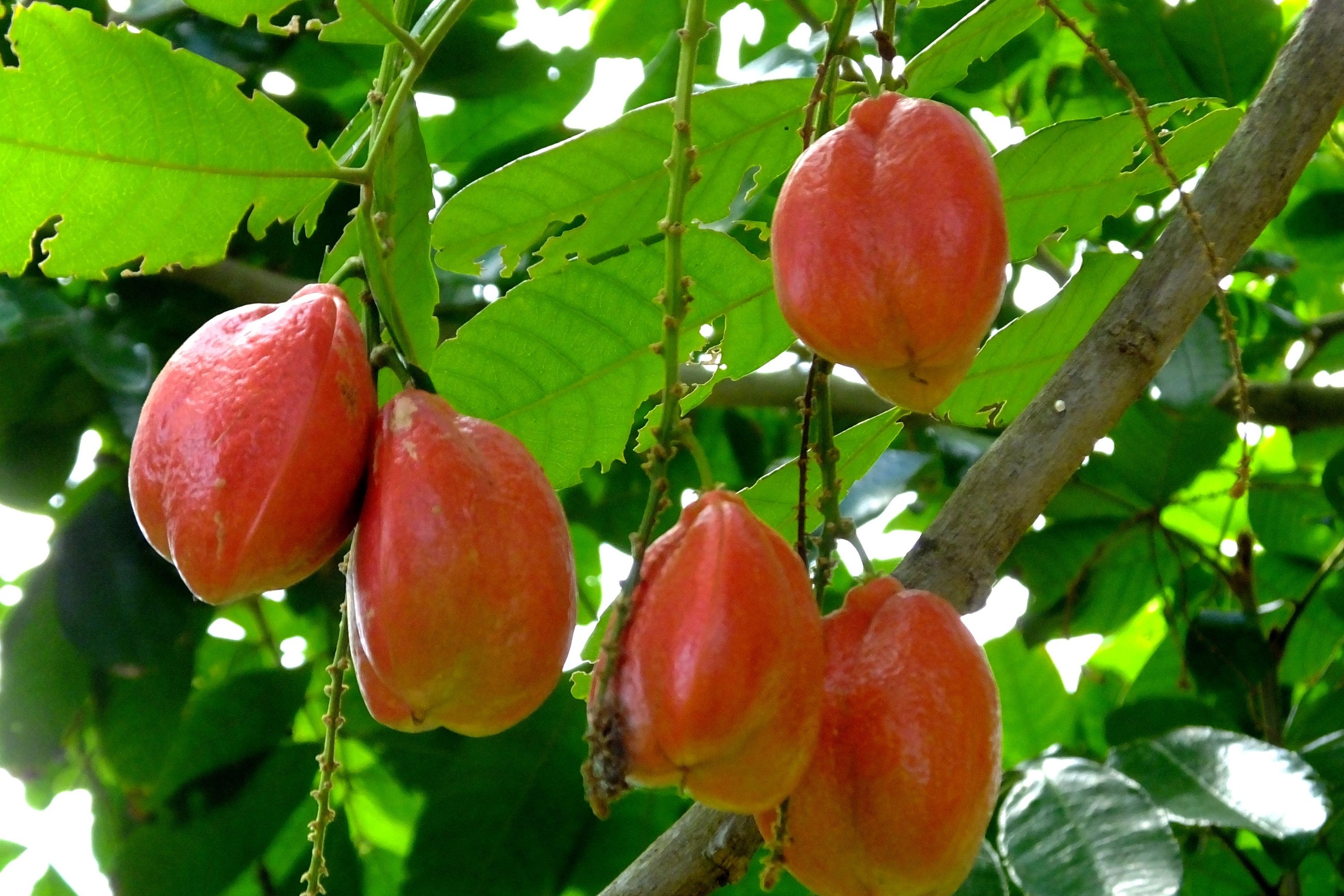Ankye
(Blighia sapida)

Description
The ackee, also known as ankye, achee, akee, ackee apple or ayee (Blighia sapida) is a fruit of the Sapindaceae (soapberry) family, as are the lychee and the longan. It is native to tropical West Africa. The scientific name honours Captain William Bligh who took the fruit from Jamaica to the Royal Botanic Gardens in Kew, England in 1793.The English common name is derived from the West African Akan akye fufo. Although having a long-held reputation as being poisonous with potential fatalities, the fruit arils are renowned as delicious when ripe, prepared properly, and cooked, and are a feature of various Caribbean cuisines. Ackee is the national fruit of Jamaica and is considered a delicacy. Ackee is an evergreen tree that grows about 10 metres tall, with a short trunk and a dense crown.The leaves are paripinnately,compound 15–30 centimetres (5.9–11.8 in) long, with 6–10 elliptical to oblong leathery leaflets. Each leaflet is 8–12 centimetres (3.1–4.7 in) long and 5–8 centimetres (2.0–3.1 in) wide. The inflorescences are fragrant, up to 20 cm long, with unisexual flowers that bloom during warm months.Each flower has five greenish-white petals, which are fragrant. The fruit is pear-shaped and has 3 lobes (2 - 4 lobes are common).When it ripens, it turns from green to a bright red to yellow-orange, and splits open to reveal three large, shiny black seeds, each partly surrounded by soft, creamy or spongy, white to yellow flesh — the aril having a nut-like flavor and texture of scrambled eggs. The fruit typically weighs 100–200 grams (3.5–7.1 oz).The tree can produce fruit throughout the year, although January–March and October–November are typically periods of fruit production.
Taxonomic tree:







